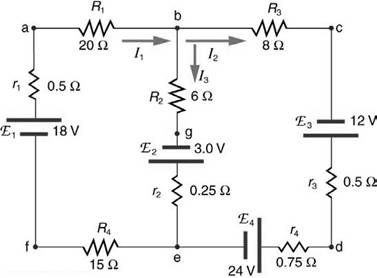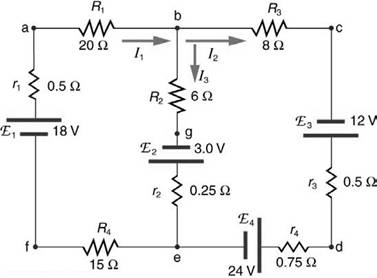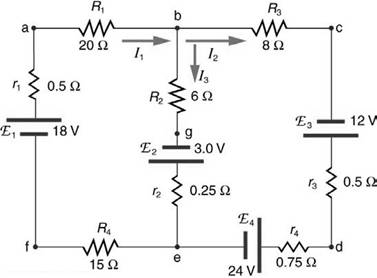1 Introduction: The Nature Of Science And Physics 2 Kinematics 3 Two-dimensional Kinematics 4 Dynamics: Force And Newton's Laws Of Motion 5 Further Applications Of Newton's Laws: Friction, Drag, And Elasticity 6 Gravitation And Uniform Circular Motion 7 Work, Energy, And Energy Resources 8 Linear Momentum And Collisions 9 Statics And Torque 10 Rotational Motion And Angular Momentum 11 Fluid Statics 12 Fluid Dynamics And Its Biological And Medical Applications 13 Temperature, Kinetic Theory, And The Gas Laws 14 Heat And Heat Transfer Methods 15 Thermodynamics 16 Oscillatory Motion And Waves 17 Physics Of Hearing 18 Electric Charge And Electric Field 19 Electric Potential And Electric Field 20 Electric Current, Resistance, And Ohm's Law 21 Circuits, Bioelectricity, And Dc Instruments 22 Magnetism 23 Electromagnetic Induction, Ac Circuits, And Electrical Technologies 24 Electromagnetic Waves 25 Geometric Optics 26 Vision And Optical Instruments 27 Wave Optics 28 Special Relativity 29 Introduction To Quantum Physics 30 Atomic Physics 31 Radioactivity And Nuclear Physics 32 Medical Applications Of Nuclear Physics 33 Particle Physics 34 Frontiers Of Physics expand_more
Chapter Questions expand_more
Problem 1CQ Problem 2CQ Problem 3CQ Problem 4CQ Problem 5CQ Problem 6CQ: Knowing that the severity of a shock depends on the magnitude of the current through your body,... Problem 7CQ: Would your headlights dim when you start your car's engine if the wires in your automobile were... Problem 8CQ: Some strings of holiday lights are wired in series to save wiring costs. An old version utilized... Problem 9CQ: If two household lightbulbs rated 60 W and 100 W are connected in series to household power, which... Problem 10CQ: Suppose you are doing a physics lab that asks you to put a resistor into a circuit, but all the... Problem 11CQ: Before World War II, some radios got power through a “resistance cord" that had a significant... Problem 12CQ: Some light bulbs have three power settings (not including zero), obtained from multiple filaments... Problem 13CQ: Is every emf a potential difference? Is every potential difference an emf? Explain. Problem 14CQ Problem 15CQ: Given a battery, an assortment of resistors, and a variety of voltage and current measuring devices,... Problem 16CQ: Two different 12-V automobile batteries on a store shelf are rated at 600 and 850 “cold cranking... Problem 17CQ: What are the advantages and disadvantages of connecting batteries in series? In parallel? Problem 18CQ: Semitractor trucks use four large 12-V batteries. The starter system requires 24 V, while normal... Problem 19CQ Problem 20CQ Problem 21CQ Problem 22CQ Problem 23CQ Problem 24CQ Problem 25CQ: Suppose you are using a multimeter (one designed to measure a range of voltages, currents, and... Problem 26CQ Problem 27CQ Problem 28CQ: Why can a null measurement be more accurate than one using standard voltmeters and ammeters? What... Problem 29CQ: If a potentiometer is used to measure cell emfs on the order of a few volts, why is it most accurate... Problem 30CQ: Regarding the units involved in the relationship t = RC, verify that the units of resistance times... Problem 31CQ: The RC time constant in heart defibrillation is crucial to limiting the time the current flows. If... Problem 32CQ: When making an ECG measurement, it is important to measure voltage variations over small time... Problem 33CQ Problem 34CQ Problem 35CQ Problem 36CQ Problem 37CQ: A long, inexpensive extension cord is connected from inside the house to a refrigerator outside. The... Problem 38CQ Problem 39CQ Problem 1PE: (a) What is the resistance often 275-O resistors connected in series? (b) In parallel? Problem 2PE: (a) What is the resistance of a 1.00 102-O, a 2.50-k O, and a 4.00-kresistor connected in series?... Problem 3PE: What are the largest and smallest resistances you can obtain by connecting a 36.0-O, a 50.0-O, and a... Problem 4PE: An 1800-W toaster, a 1400-W electric frying pan, and a 75-W lamp are plugged into the same outlet in... Problem 5PE: Your car’s 30.0-W headlight and 2.40-kW starter are ordinarily connected in parallel in a 12.0-V... Problem 6PE: (a) Given a48.0-V battery and 24.0-O and 96.0-O resistors, find the current and power for each when... Problem 7PE: Referring to the example combining series and parallel circuits and Figure 21.6, calculate I3in the... Problem 8PE: Referring to Figure 21.6: (a) Calculate P3 and note how it this module. (b) Find the total power... Problem 9PE: Refer to Figure 21.7 and the discussion of lights dimming when a heavy appliance comes on. (a) Given... Problem 10PE Problem 11PE: Show that if two resistors R1and R2are combined and one is much greater than the other (R 1 >>R 2 ):... Problem 12PE: Unreasonable Results Two resistors, one having a resistance of 145 , are connected in parallel to... Problem 13PE: Unreasonable Results Two resistors, one having a resistance of 900 k, are connected in series to... Problem 14PE: Standard automobile batteries have six lead-acid cells in series, creating a total emf of 12.0 V.... Problem 15PE: Car bon-zinc dry cells (sometimes referred to as non- alkaline cells) have an emf of 1.54 V, and... Problem 16PE: What is the output voltage of a 3.0000-V lithium cell in a digital wristwatch that draws 0.300 mA,... Problem 17PE: (a) What is the terminal voltage of a large 1.54-V carbon-zinc dry cell used in a physics lab to... Problem 18PE: What is the internal resistance of an automobile battery that has an emf of 12.0 V and a terminal... Problem 19PE: (a) Find the terminal voltage of a 12.0-V motorcycle battery having a 0.600- internal resistance,... Problem 20PE: A car battery with a 12-V emf and an internal resistance of 0.050 is being charged with a current... Problem 21PE: The hot resistance of a flashlight bulb is 2.30 , and it is run by a 1.58-V alkaline cell having a... Problem 22PE: The label or a portable radio recommends the use of rechargeable nickel-cadmium cells (nicads),... Problem 23PE: An automobile starter motor has an equivalent resistance of 0.0500 and is supplied by a 12.0-V... Problem 24PE: A child’s electronic toy is supplied by three 1.58-V alkaline cells having internal resistances of... Problem 25PE: (a) What is the internal resistance of a voltage source if its terminal voltage drops by 2.00 V when... Problem 26PE: A person with body resistance between his hands of 1.00 k accidentally grasps the terminals of a... Problem 27PE: Electric fish generate current with biological cells called electroplaques, which are physiological... Problem 28PE: Integrated Concepts A 12.0-V emf automobile battery has a terminal voltage of 16.0 V when being... Problem 29PE: Unreasonable Results A 1.58-V alkaline cell with a 0.200- internal resistance is supplying 8.50 A... Problem 30PE: Unreasonable Results (a) What is the internal resistance of a 1.54-V dry cell that supplies 1.00 W... Problem 31PE Problem 32PE Problem 33PE: Verify the second equation in Example 21.5 by substituting the values found for the currents I1 and... Problem 34PE: Verify the third equation in Example 21.5 by substituting the values found for the currents I1 and... Problem 35PE Problem 36PE Problem 37PE Problem 38PE Problem 39PE: Solve Example 21.5, but use loop abcdefgha instead of loop akledcba. Explicitly show how you follow... Problem 40PE Problem 41PE Problem 42PE: What is the sensitivity of the galvanometer (that is, what current gives a full-scale deflection)... Problem 43PE: What is the sensitivity of the galvanometer (that is, what current gives a full-scale deflection)... Problem 44PE: Find the resistance that must be placed in series with a 25.0-galvanometer having a 50.0-A... Problem 45PE: Find the resistance that must be placed in series with a 25.0- galvanometer having a 50.0-A... Problem 46PE: Find the resistance that must be placed in series with a 25.0- galvanometer having a 50.0-A... Problem 47PE: Find the resistance that must be placed in paralled with a 25.0- galvanometer having a 50.0A... Problem 48PE: Find the resistance that must be placed in series with a 10.0- galvanometer having a 100A... Problem 49PE: Find the resistance that must be placed in parallel with a 10.0 galvanometer having a 100A... Problem 50PE Problem 51PE: Suppose you measure the terminal voltage of a 3.2G0-V lithium cell having an internal resistance of... Problem 52PE: A certain ammeter has a resistance of 5.00X10-5 an its 3.00-A scale and contains a 10.0- ... Problem 53PE: A 1,00-?O voltmeter is placed in parallel with a 75.0kresistor in a circuit, (a) Draw a circuit... Problem 54PE: A 0.0200- ammeter is placed in series with a 10.00- resistor in a circuit, (a) Draw a circuit... Problem 55PE: Unreasonable Results Suppose you have a 40.0- galvanometer with a 25.0-A sensitivity, (a) What... Problem 56PE: Unreasonable Results (a) What resistance would you put in parallel with a 40.0- galvanometer having... Problem 57PE: What is the emf x of a cell being measured in a potentiometer if the standard cell’s emf is 12.0 V... Problem 58PE: Calculate the emfx of a dry cell for which a potentiometer is balanced when Rx= 1,200 , while an... Problem 59PE: When an unknown resistance Rxis placed in a Wheatstone bridge, it is possible to balance the bridge... Problem 60PE: To what value must you adjust R3to balance a Wheatstone bridge, if the unknown resistance Rxis 100 ... Problem 61PE: (a) What is the unknown emfx in a potentiometer that balances when Rxis 10.0 O, and balances when... Problem 62PE: Suppose you want to measure resistances in the range from 10,0 to 10.0 k using a Wheatstone bridge... Problem 63PE: The timing device in an automobile’s intermittent wiper system is based on an RC time constant and... Problem 64PE: A heart pacemaker fires 72 times a minute, each time a 25.0 nF capacitor is charged (by a battery in... Problem 65PE: The duration of a photographic flash is related to an RC time constant, which is 0.100 s for a... Problem 66PE: A 2.00- and a 7.50-F capacitor can be connected in series or parallel, as can a 25.0- and a 100k... Problem 67PE: After two time constants, what percentage of the final voltage, emf, is on an initially uncharged... Problem 68PE: A 500- resistor, an uncharged 1.50-F capacitor and a 6.16-V emf are connected in series, (a) What is... Problem 69PE: A heart defibrillator being used on a patient has an RC time constant of 10.0 ms due to the... Problem 70PE: An ECG monitor must have an RC time constant less than 1.00 102 to be able to measure variations in... Problem 71PE Problem 72PE: Using the exact exponential treatment, find how much time is required to discharge a 250-? capacitor... Problem 73PE: Using the exact exponential treatment, find how much time is required to charge an initially... Problem 74PE: Integrated Concepts If you wish to take a picture of a bullet traveling at 500 m/s, then a very... Problem 75PE: Integrated Concepts A flashing lamp in a Christmas earring is based on an RC discharge of a... Problem 76PE: Integrated Concepts A 160F capacitor charged to 450 V is discharged through a 31.2-k resistor. (a)... Problem 77PE: Unreasonable Results (a) Calculate the capacitance needed to get an RC time constant of 1,00x103 s... Problem 78PE: Construct Your Own Problem Consider a camera's flash unit. Construct a problem in which you... Problem 79PE: Construe! Your Own Problem Consider a rechargeable lithium cell that is to be used to power a... Problem 1TP Problem 2TP Problem 3TP Problem 4TP Problem 5TP Problem 6TP Problem 7TP Problem 8TP format_list_bulleted





 College PhysicsPhysicsISBN:9781938168000Author:Paul Peter Urone, Roger HinrichsPublisher:OpenStax College
College PhysicsPhysicsISBN:9781938168000Author:Paul Peter Urone, Roger HinrichsPublisher:OpenStax College Principles of Physics: A Calculus-Based TextPhysicsISBN:9781133104261Author:Raymond A. Serway, John W. JewettPublisher:Cengage Learning
Principles of Physics: A Calculus-Based TextPhysicsISBN:9781133104261Author:Raymond A. Serway, John W. JewettPublisher:Cengage Learning
 Physics for Scientists and Engineers: Foundations...PhysicsISBN:9781133939146Author:Katz, Debora M.Publisher:Cengage Learning
Physics for Scientists and Engineers: Foundations...PhysicsISBN:9781133939146Author:Katz, Debora M.Publisher:Cengage Learning Physics for Scientists and Engineers, Technology ...PhysicsISBN:9781305116399Author:Raymond A. Serway, John W. JewettPublisher:Cengage Learning
Physics for Scientists and Engineers, Technology ...PhysicsISBN:9781305116399Author:Raymond A. Serway, John W. JewettPublisher:Cengage Learning College PhysicsPhysicsISBN:9781285737027Author:Raymond A. Serway, Chris VuillePublisher:Cengage Learning
College PhysicsPhysicsISBN:9781285737027Author:Raymond A. Serway, Chris VuillePublisher:Cengage Learning




